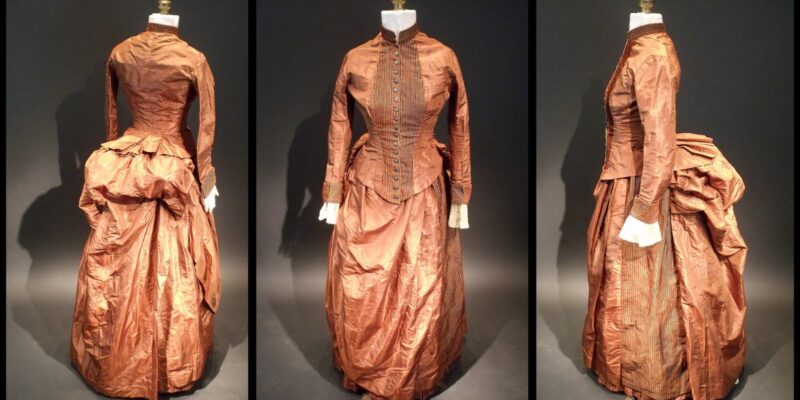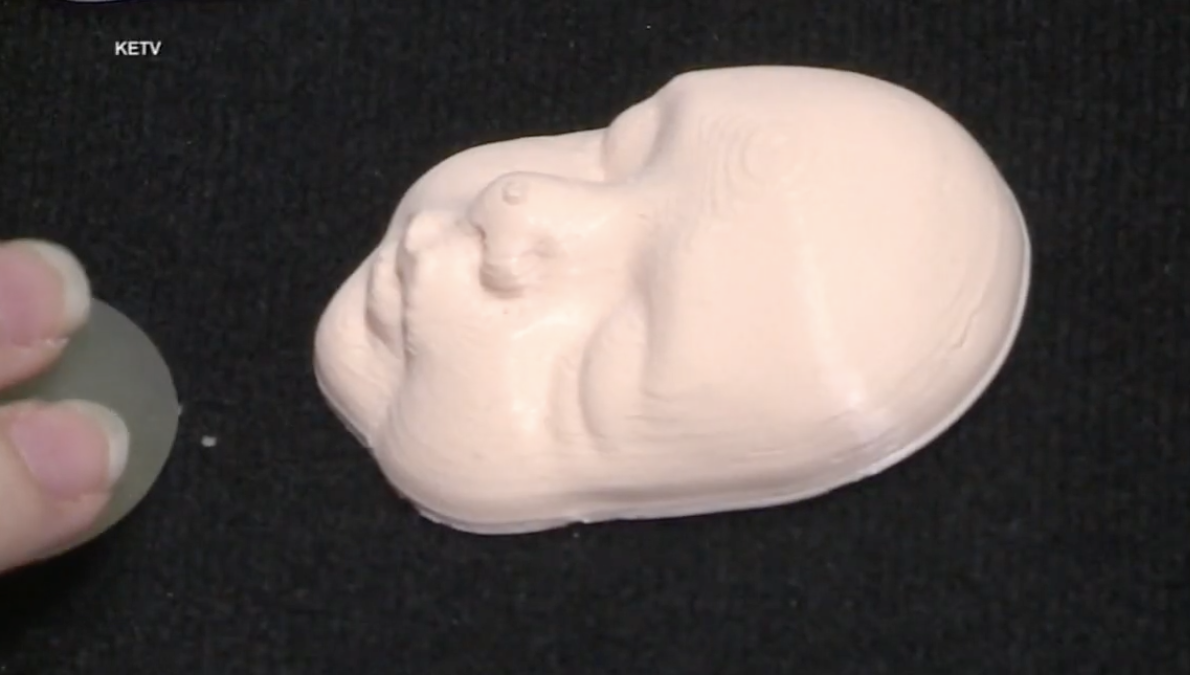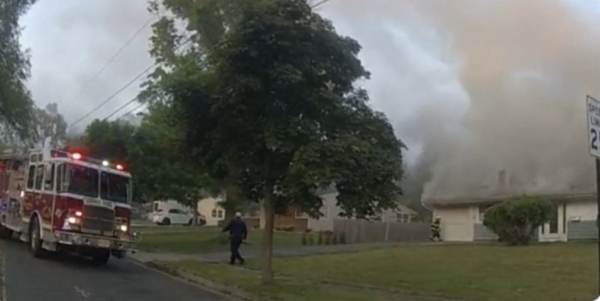
Sara Rivers Cofield loves antique clothing. One day, while browsing for unique period clothing in a Maine antique mall ten years ago, she came across what appeared to be a classic silk bustle dress from the 1800s that held a secret.
“The bronze-colored dress was in good condition, with a draped skirt, puffy bustle, and metal buttons that appeared to depict a Shakespearean motif,” wrote The New York Times. “Ms. Rivers Cofield, an archaeologist, bought it for $100. Little did she know that the garment also contained a mystery: A secret pocket with a cryptic note.
Part of the message, written on two, scrunched-up translucent sheets of paper, read: ‘Bismark Omit leafage buck bank / Paul Ramify loamy event false new event.’”
Cofield was baffled, “What the…?,” she noted on her Commitment to Costumes blog at the time. “I’m putting it up here in case there’s some decoding prodigy out there looking for a project.”
Normally I just concern myself with questions like how old is the garment, how was it worn, has it been altered, etc. In this case though, those answers are pretty clear. But questions like who was this Bennett, and why did her dress have a barely accessible pocket with an incoherent message in it? There I’m stumped. One thing I do know for certain though, is that the dress was SO worth the hundred bucks I paid for it, and all of that angst I had about justifying the purchase can go hang.”
Now, thanks to the work of Wayne Chan, a data analyst at the University of Manitoba, the mystery has been solved. The codes were used to transmit local weather via the telegraph.
Smithsonian Magazine explains that “in those days, telegraph messages containing lots of information had to be condensed in order to save money. Chan explained in a 2023 paper in the journal Cryptologia that telegraph companies charged by the word—so encoding messages could effectively cut down their price.
The line beginning with Bismark, for example, seems to encode the weather in present-day Bismarck, North Dakota, on May 27, 1888, at 10 p.m. The short list of five words has wide-reaching weather data—air temperature, barometric pressure, dew point, precipitation, wind direction, cloud conditions, wind velocity and sunset observations—all baked into it.
Chan became interested in tracking down the telegraphic code used in the notes, so he searched through 170 different codebooks—without success. Eventually, he found a book with a section on the U.S. Army Signal Corps’ weather code, and with it, he felt he was onto something.
Certain aspects of the notes, such as the length of the lines (around five to seven words) and the fact that they started with the name of a place, were reminiscent of the weather codes Chan had come across, according to CBC News. He contacted a NOAA librarian who led him to an 1892 telegraphic code book for weather, which helped Chan confirm the notes did in fact contain meteorological reports.”
According to NOAA, there were a number of women who worked as clerical staff for the Army Signal Service in Washington, D.C. during the 1880s. However, Chan and Rivers Cofield are yet to determine the true owner of the dress and the way they got hold of the weather report.
Maybe somethings are better left to mystery.










Weather codes in dress??